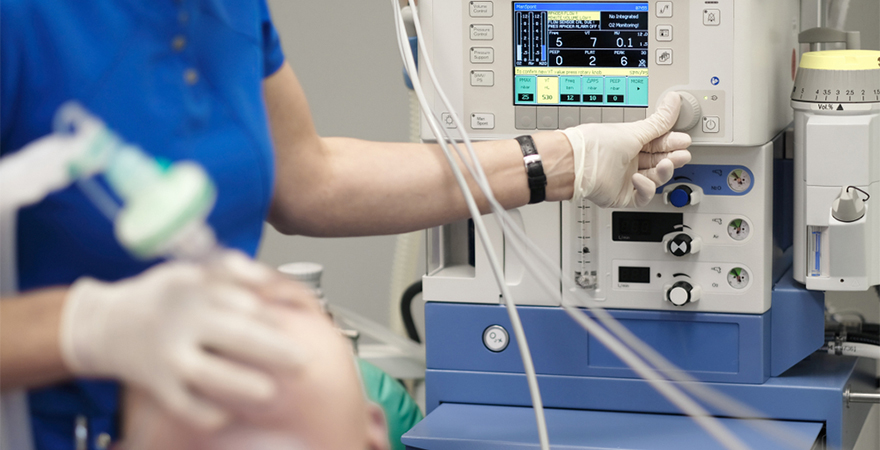
March 27, 2024
Welcome to our comprehensive guide on Anesthesiology, where we delve into the essential aspects of conscious sedation, monitored anesthesia care, and peripheral nerve blocks.
In this blog, we will understand the definitions, procedures, risks, benefits, preparation, and recovery processes associated with each technique. Whether you’re a medical professional seeking insights or a patient preparing for a procedure,.
Let’s see our topics for the blog!
Conscious Sedation Explained
Definitions & Procedure Overview
Although you may not believe it, we have Conscious Sedation, also known as procedural sedation.
It is a technique used to relax and calm patients undergoing medical procedures like epidural steroid injections or facet joint injections while maintaining their ability to respond to verbal commands and physical stimuli.
The primary goal when performing sedation of this type is to alleviate discomfort, anxiety, and pain during medical procedures that do not require general anesthesia.
Conscious sedation is commonly used for various diagnostic and therapeutic procedures, such as minor surgeries, and interventional radiological procedures.
Now that we understand the definition and purpose of the process, it’s time to grasp how the procedure unfolds.
First things first, it is important to understand that the sedative medications are carefully adjusted to achieve the desired level of sedation while ensuring that patients can maintain their protective reflexes and respond to verbal stimuli.
Also, with this procedure, vital signs are closely monitored, and emergency equipment is readily available to ensure patient safety.
After the procedure, patients usually recover quickly from the effects of sedation, enabling them to resume normal activities shortly afterward.
As you can see, conscious sedation is crucial for enhancing patient comfort and facilitating medical interventions.

Conscious Sedation: Pros & Cons
Let’s be realistic. In medical procedures, we cannot lie, as there are risks involved in all procedures. That’s why we’ve compiled a list of both risks and benefits for you to observe, understand, and consider the procedure on your own.
Benefits:
- Reduced anxiety and discomfort during procedures
- Enhanced patient cooperation and compliance
- Faster recovery compared to general anesthesia
- Lower risk of complications associated with deeper levels of sedation
- A cost-effective alternative for minor procedures.
Risks:
- Nausea and vomiting
- Allergic reactions
- Over-sedation leads to decreased consciousness
Understood? This is undoubtedly, in a few words, the functioning of Conscious Anesthesiology!
Now, it’s time to understand our second type of anesthesiology at Synergex Med.
Insights in Monitored Anesthesia Care (MAC)
Definitions & Procedure Overview
This type of anesthesia is administered by an anesthesiologist or an experienced nurse. The patient receives sedatives and pain medications to induce a state of sedation and analgesia during a medical procedure.
The purpose of MAC is to ensure the patient’s comfort and safety throughout the procedure by continuously monitoring vital signs, such as heart rate, blood pressure, and oxygen saturation, and adjusting the level of sedation as needed.
This allows patients to undergo procedures without experiencing pain or discomfort while minimizing the risks associated with deeper levels of anesthesia. MAC is commonly used for various surgical and diagnostic procedures.
Like we already said, it is important to foster clear communication among the anesthesia team, surgical team, and other healthcare providers involved in the procedure to facilitate coordinated care and optimal patient outcomes.
Monitored Anesthesia Care Pros & Cons
As we’ve mentioned before, we’ve made it easy for you to understand both the benefits and risks of each of the procedures, so now it’s time to do the same for our MAC anesthesia procedure!

Benefits
- Improved surgical outcomes.
- Enhanced intraoperative monitoring.
- Greater procedural efficiency.
Risks
- Respiratory depression
- Hypotension (low blood pressure)
- Bradycardia (slow heart rate)
- Headache
- Dizziness
- Nerve injury at the injection site
- Psychological reactions, such as confusion or agitation
Anesthesiology: Generalities
Preparation & Recovery
Now that we’ve understood definitions, pros, and cons of procedures, it’s time to see how the application of anesthesiology of conscious sedation and Monitored Anesthesiology Care works and the recovery process will unfold after undergoing the entire medical procedure.
- Pre-procedure instructions: The doctor will discuss fasting requirements, medication adjustments, and any other pre-procedure protocols.
- Patient assessment: The specialist will conduct a thorough evaluation of the patient’s medical history, current health status, and any risk factors. In this phase, be honest with your doctor, all the information is important to keep yourself safe.
- Informed consent: The doctor or nurse will ensure that the patient understands the procedure, potential risks, and benefits, and obtain their informed consent.
- Monitoring setup: The specialist will prepare the monitoring equipment for vital signs, oxygen saturation, and electrocardiography to ensure patient safety.
- Sedation administration: The doctor will administer sedatives or anesthetic agents according to the prescribed dosage and monitor the patient’s response closely.
- Post-procedure care: Your doctors will provide appropriate post-procedure instructions, monitor for any adverse effects, and ensure adequate pain relief.
As you can see these two types of anesthesia have a very similar application procedure, so you have to be very careful even though it is not so invasive. Now that we have understood these two procedures, we only need 1 more! Are you ready?
In a Nutshell Anesthesiology (Peripheral Nerve Block)
Definitions & Procedure Overview
A peripheral nerve block is a type of regional anesthesia that involves injecting local anesthetic medication near a peripheral nerve to block sensation in a specific area of the body.
The purpose of this technique is to provide targeted pain relief during surgical or diagnostic procedures, minimizing the need for systemic analgesics and reducing the risk of systemic side effects associated with general anesthesia.
Peripheral Nerve Block Anesthesia Care Pros & Cons
Now that you have a better understanding of how this type of anaesthesiology works, it is necessary to explain in detail the risks and benefits of anaesthesiology.

Benefits
- Effective pain relief: Peripheral nerve blocks provide targeted pain relief for specific areas of the body, minimizing the need for systemic opioids and reducing postoperative pain.
- Reduced side effects: Compared to general anesthesia, peripheral nerve blocks are associated with fewer systemic side effects, such as nausea, vomiting, and respiratory depression.
- Enhanced recovery: By reducing pain and opioid consumption, peripheral nerve blocks can facilitate early mobilization, shorten hospital stays, and promote faster recovery after surgery.
- Improved surgical outcomes: Effective pain management with peripheral nerve blocks may contribute to better surgical outcomes, including reduced rates of postoperative complications and improved patient satisfaction.
- Regional anesthesia benefits: In addition to pain relief, peripheral nerve blocks offer the advantages of preserved muscle strength and function, allowing patients to participate in physical therapy and rehabilitation more effectively.
Risks
- Nerve damage: Potential risk of injury to surrounding nerves, resulting in sensory or motor deficits.
- Bleeding: Possibility of hematoma formation at the injection site, leading to increased bleeding and potential complications.
- Infection: Risk of infection at the injection site, which can lead to localized or systemic infections if not properly managed.
- Allergic reactions: Rare but possible allergic reactions to local anesthetics or other medications used during the procedure.
- Systemic toxicity: Risk of systemic absorption of local anesthetics, leading to central nervous system or cardiovascular effects if excessive doses are administered.
Peripheral Nerve Block Anesthesia Preparation & Recovery
- Patient positioning: Position the patient appropriately to access the target nerve or nerves effectively.
- Skin preparation: Cleanse the skin thoroughly at the injection site to minimize the risk of infection.
- Local anesthesia: Administer local anesthetic to numb the skin and underlying tissues before the nerve block procedure.
- Needle insertion: Use ultrasound or nerve stimulator guidance to accurately place the needle near the target nerve or nerves.
- Injection technique: Slowly inject the anesthetic solution around the nerve or nerves while monitoring patient response and spread of anesthesia.
- Confirmation of effectiveness: Assess the patient for sensory and motor blockade to confirm the successful nerve block.
- Post-procedure care: Provide appropriate post-procedure instructions, monitor for any adverse effects, and ensure adequate pain relief.
After looking at all of this information, we need you to know that we also have a simulator, inside of our “Education Segment” for you to check how all of this type of anesthesia is applied!
In conclusion, the field of Anesthesiology encompasses a diverse range of techniques aimed at ensuring patient comfort, safety, and efficacy during medical procedures.
By understanding the principles and practices outlined in this guide, healthcare providers can deliver high-quality care, while patients can approach procedures with confidence and peace of mind.
At Synergex Med, we are committed to excellence in anesthesia and patient-centered care, ensuring positive experiences and successful outcomes for all.


